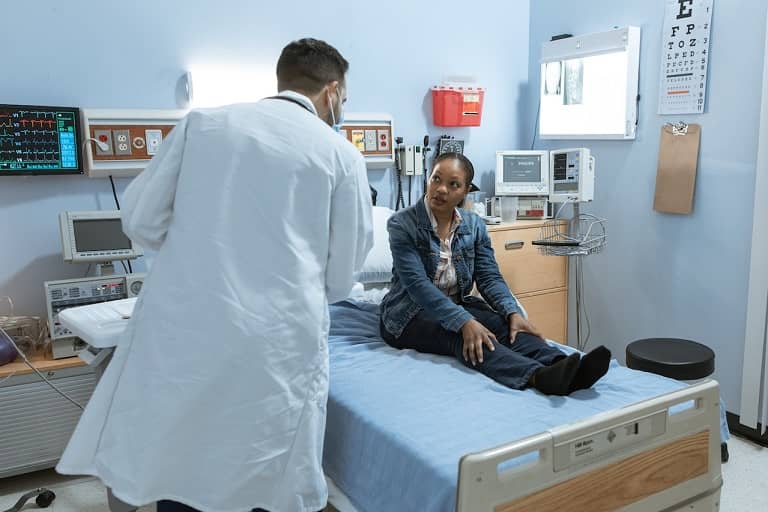
The Five Most Common Car Accident Injuries
It only takes an instant for your life to change following a car crash. One minute you can be driving to work, and the next, you can be fighting for your life. Even those who survive these devastating accidents are often left dealing with catastrophic injuries, excruciating pain, and an inability to maintain the relationships they once had.
Yet, while the severity of these injuries will often depend on the circumstances of the car accident, there are a few injuries that frequently result from these collisions. In the below post, we will walk you through some of these injuries and explain how a car accident attorney and the insurance company will value your injury claim.
1. Traumatic Brain Injuries
A traumatic brain injury is an injury to the brain that results from a violent jolt or blow to the body or head. It can also result from an object penetrating the brain tissue, such as a shattered piece of skull.
However, while a mild traumatic brain injury can temporarily affect the brain, more-serious brain injuries can result in torn tissues, bleeding, and other severe damages to the brain that can lead to long-term repercussions or even death.
Some of the more common symptoms of a traumatic brain injury include:
- Headaches
- Nausea
- Fatigue
- Sensory problems
- Concentration problems
- Mood changes
In the more extreme cases, an individual can lose consciousness, experience convulsions or seizures, slurred speech, severe agitation, and other unusual behavior.
2. Spinal Cord Damage
A spinal cord injury refers to any damage to the spinal cord or nerves located at the end of the spinal canal. Due to these injuries, victims can experience permanent changes in their sensations, strength, and other body functions below the injury site.
However, your ability to control your limbs after this injury will often depend on where the injury occurred in the spinal cord and the severity of this trauma. For instance, if you suffer a:
- Complete Injury: All feeling and the ability to control movement are lost below the spinal cord injury site.
- Incomplete Injury: Some sensory or motor functions below the affected area will remain, and there are varying degrees of an incomplete injury.
These spinal cord injuries also include the following symptoms:
- Movement loss
- Altered sensations
- Loss of bladder or bowel control
- Exaggerated reflexes or spasms
- Difficulty breathing
3. Back Trauma
Because a car accident tends to exert an immense amount of force on a person’s back and spine, back trauma is prevalent following a high-impact car collision and often includes the following injuries:
- Whiplash: This injury results from a rapid, back-and-forth movement of the neck and head upon impact, leading to damage to the tendons, muscles, nerves, bones, ligaments, and discs in the cervical spine.
- Lumbar Spine Strains and Sprains: These strains and sprains develop when the force of a car crash causes the lower back’s tendons, muscles, and ligaments to tear or overstretch.
- Spinal Disc Damage: This damage happens when a car crash causes damage or displacement to one or more spinal cord discs.
4. Internal Damage
One of the most serious consequences of a car collision involves internal bleeding. Yet, even though these injuries often result from apparent injuries that require immediate medical attention, they can also result from less severe trauma or be delayed after an accident. However, if this internal bleeding does not stop on its own, surgery will usually be required.
Internal damage from a motor vehicle accident is often the result of blunt trauma, which occurs when a body part collides with something else, typically at high speed. As a result of this impact, the blood vessels inside the body become crushed or torn.
Almost every damaged body organ or blood vessel can lead to internal bleeding. However, the most serious sources of this internal bleeding include head trauma, damage to the abdomen, liver, and spleen, and damage to the lungs or heart.
5. Soft Tissue Injuries (Lets move this to #5 since it is the least valuable.)
The most common soft tissue injuries from a car crash usually involve muscle, tendon, and ligament injuries, including joint and ligament sprains, muscle strains, whiplash, torn rotator cuffs, and contusions. However, the repercussions of these injuries can also include bruising, inflammation, swelling, stiffness, and soreness. Worse yet, even with proper treatments, these injuries can take a long time to heal and require extensive medical intervention.
Fight for the Justice You Deserve and Get the Medical Treatments You Need
If you suffered an injury due to a car crash because of another person’s wrongful actions, do not deal with these debilitating injuries on your own. Instead, reach out to one of our experienced personal injury attorneys today for a free case consultation and let our lawyers explain how we can help you fight for maximum financial recovery to ensure you get the medical treatments you need and the help you and your family require.


